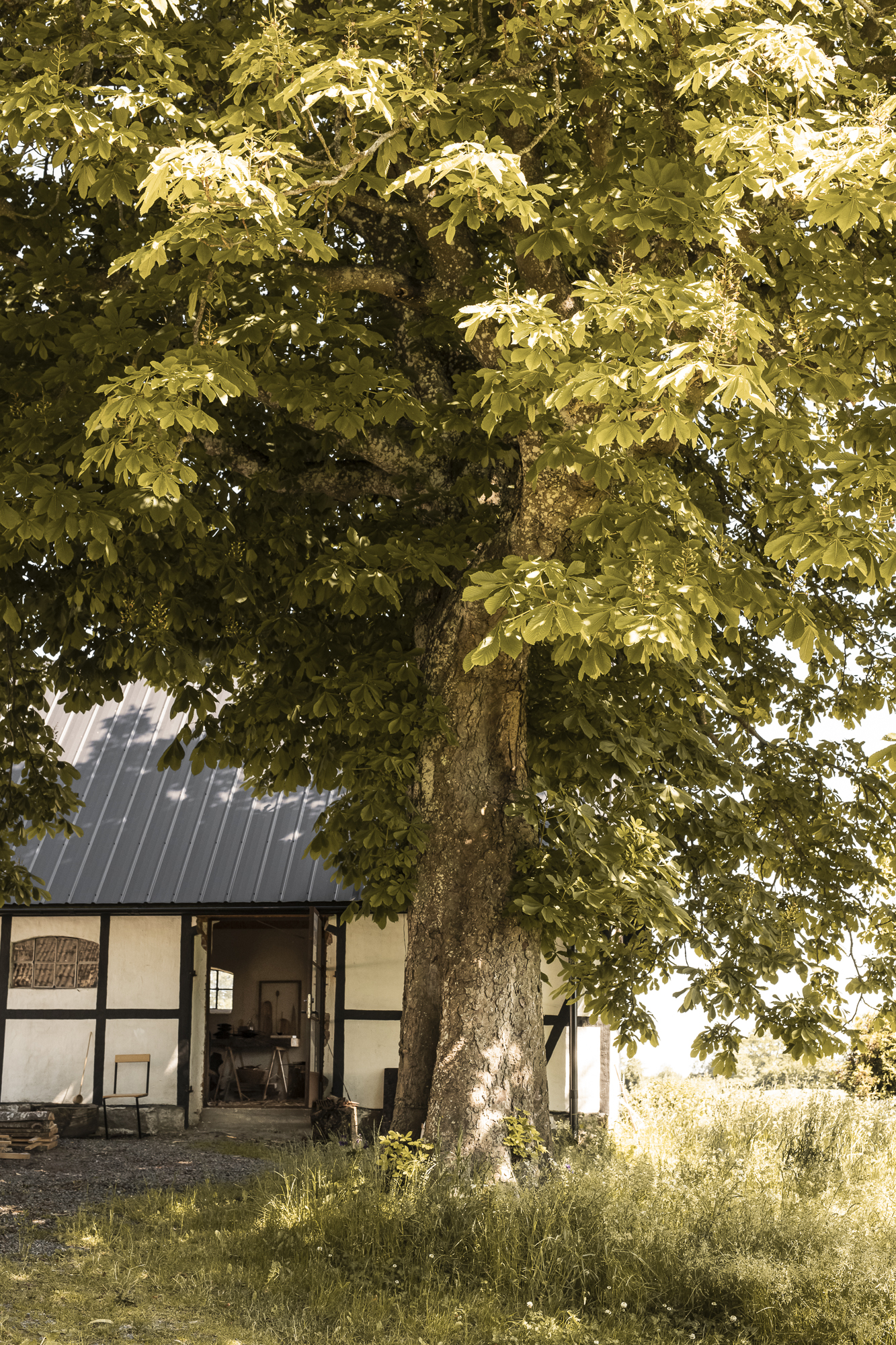Daniel Wester on wood carving as a form of therapy
DANIEL WESTER ON
wood carving as form of therapy
INTERVIEW

At Daniel Wester and girlfriend Hanna Rönnbäck’s summer house in southern Sweden, a part of the 1886 barn has been converted to Wester’s workshop. It is filled with pieces of wood, tools and various unfinished work, and the floor is completely hidden beneath a thick layer or wood shavings and sawdust.
Swedish wood artisan Daniel Wester uses carving as therapy, creating beautiful wooden sculptures with a fragile sensibility. His remote summer abode in the south of Sweden is a celebration to making, with plenty of space for him and his wife to experiment. His work, ranging from ebonised cherry bowls and spoons carved in hazel to vessels turned in birch, have been widely exhibited.
TNE How do you start the day?
DW It started with me wanting to do something with my hands, but soon evolved into me exploring and trying to find my own expression. I was introduced to Alberto Giacometti’s sculptures at an early age, as my mother would take me to visit the Louisiana art museum in Denmark each summer, and my work is definitely influenced by it. But there is also strong symbolism in my pieces. The long spoons, for example, are about wanting to reach a little further, and are a way to deal with my younger brother’s passing in a drowning accident. The sharing bowl, a bowl with two handles, is a commentary to today’s society, where we try to distance ourselves from others by shielding ourselves from “them” by erecting walls and moving into gated communities. I realise it might sound naive, but my work is about curiosity, inclusion, reaching out and generosity. I want to give what I have, and work towards others, not away from them.
WORDS
PHOTOGRAPHY:
Micha van Dinther
Mike Karlsson Lundgren


“The sharing bowl, a bowl with two handles, is a commentary to today’s society, where we try to distance ourselves from others by shielding ourselves from “them” by erecting walls and moving into gated communities.”
TNE You have described carving as therapy. How so?
DW Whatever emotions I harbour when I start carving – excitement, delight, anger, disappointment – are turned into a sense of balance and harmony. Sometimes I return from a photo shoot and get right to work crafting something out of wood, because I know it completely changes my emotional state. All it takes is 30 minutes or so. It is like therapy because I can be completely present in and focused on my making.
TNE Imperfection, as seen in some of your most recent work, seems to interest you. Why do you leave some pieces slightly rough and unpolished?
DW That is because I don’t want the work to be completed. Because if I finish it, I will have to put it aside and move on to the next thing. It is a way for my to remain in the process, hang on to it a little longer.

Wester, who is a photographer, uses carving as a way to deal with his emotions, as a sort of therapy. “Sometimes I return from a photoshoot and get right to work crafting something out of wood, because I know it completely changes my emotional state. All it takes is 30 minutes or so. It is like therapy because I can be completely present in and focused on my making.”

There is also strong symbolism in Wester’s pieces. “The long spoons are about wanting to reach a little further, and are a way to deal with my younger brother’s passing in a drowning accident.”


”The sharing bowl, a bowl with two handles, is a commentary to today’s society, where we try to distance ourselves from others by shielding ourselves from “them” by erecting walls and moving into gated communities. I realise it might sound naive, but my work is about curiosity, inclusion, reaching out and generosity. I want to give what I have, and work towards others, not away from them.”
TNE How has your work been received since you had your first exhibition?
DW I’ve had great response from the design, interior and art world, but have been met by some resistance in the traditional craft community. I believe it has to do with the fact that my work doesn’t conform with the properties that a functional spoon should have. But I don’t really mind, because my making was never intended for anyone else than myself. I could easily have just kept doing what I do, knowing no-one would ever have seen any of it.
TNE How do you feel now, when your work is being showcased and you’re automatically drawn into a more commercial setting?
DW I will have to admit that if feel slightly conflicted about it. I don’t have the intention of make a living off of it, I want to keep my freedom of creation. It is like an infatuation; to be able to keep the passion and love alive for as long as possible, it has to be kept away from expectations and demands. That risks squandering everything.
See more of Daniel Wester's work and home in Issue 2.


There’s often an imperfection to Wester’s work. “I don’t want the work to be completed. Because if I finish it, I will have to put it aside and move on to the next thing. It is a way for me to remain in the process, hang on to it a little longer.”
SUGGESTIONS